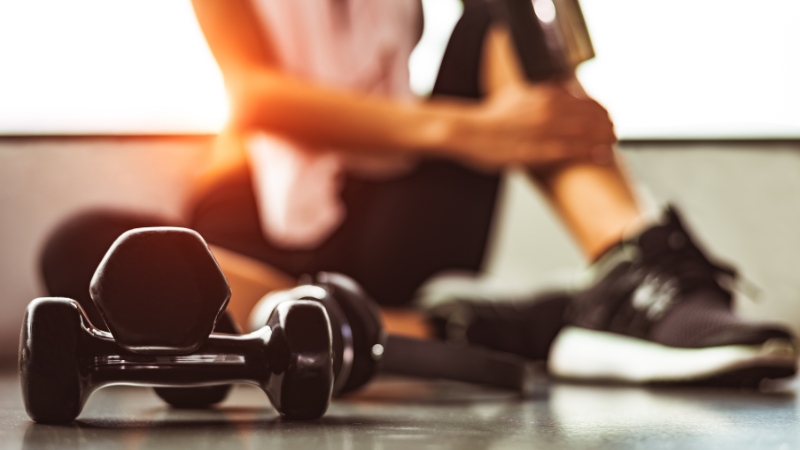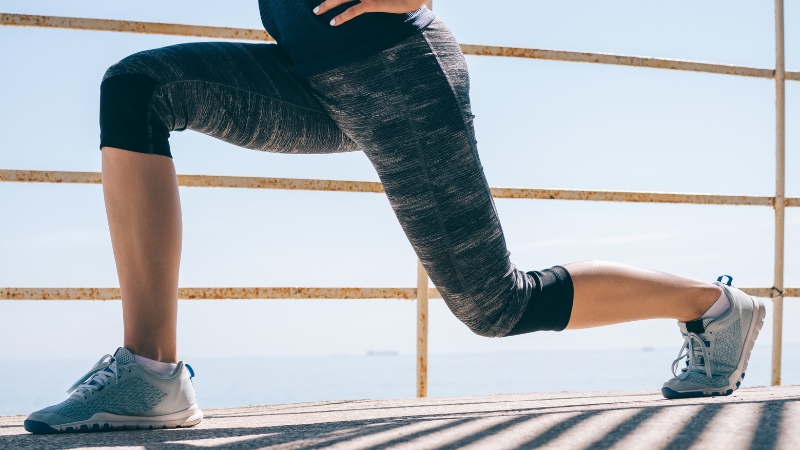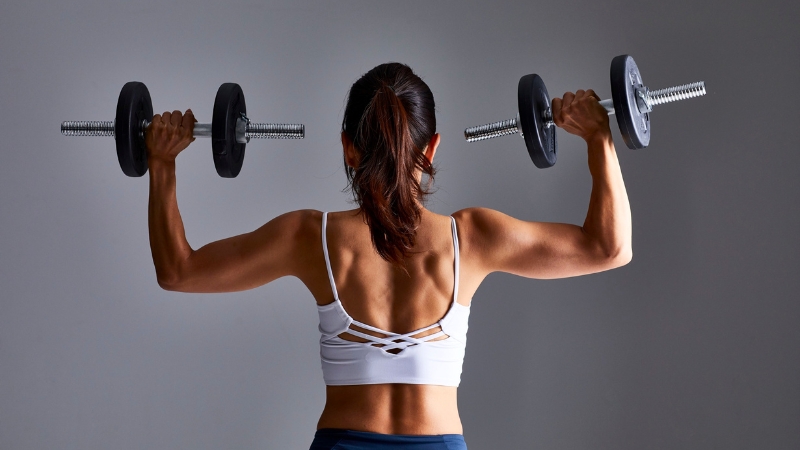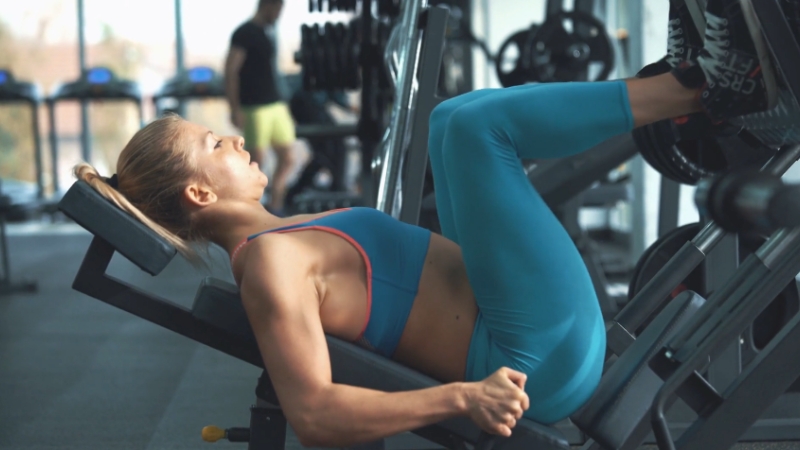
Share Post:
First, let’s clear something up: it’s not in your head. Your body really does change across your cycle — hormonally, energetically, even mentally. During your period (a.k.a. the early follicular phase), estrogen and progesterone levels are at their lowest.
This hormonal dip can impact energy, coordination, mood, and pain tolerance. Add cramps, digestive changes, and sleep disruptions into the mix, and yeah, workouts can feel way harder.
But it’s not just about feeling “off.” Physiologically, low hormone levels can affect how your body uses fuel (like carbs and fat), your core temperature, and even joint stability.
That’s why trying to push through your regular training plan without adjusting anything can backfire, leading to worse performance, longer recovery, or even injury if you’re not careful.
The good news? You don’t need to skip the gym or settle for “just stretching” unless you want to.
You can keep training, it just takes a little more flexibility and self-awareness.
Table of Contents
ToggleTL;DR (But Seriously, Don’t Skip the Whole Thing)
- You don’t have to stop working out on your period, just adjust based on how you feel
- Focus on moderate intensity, good form, and joint-friendly movements
- Use low-impact strength, mobility work, and light cardio to stay consistent
- Eat and hydrate in a way that supports your body, not punishes it
- Listening to your body is a strength, not a weakness
How to Tell When You Should Modify Workouts
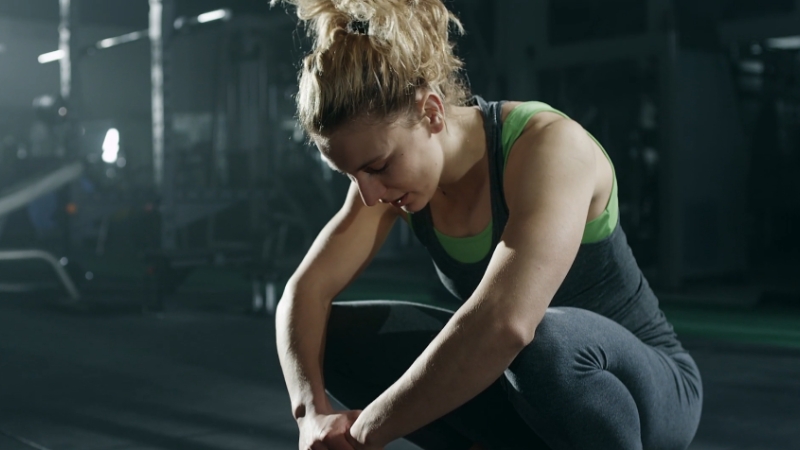
Some people breeze through their period with barely a cramp. Others feel like they’ve been hit by a truck.
So first up: tune in to what your body’s doing. Here’s what to look out for:
- Cramping or pelvic discomfort that makes high-impact movements feel jarring
- Lower back pain or stiffness that affects your range of motion
- Fatigue that hits like a wall, even after a full night of sleep
- Digestive issues (bloating, nausea, diarrhea) that make core work or running unbearable
- Mood swings or irritability that tank your motivation or make it hard to focus
You don’t need to wait until you feel completely awful to make changes. If your workout feels harder than usual for no clear reason, that’s usually your cue to shift gears.
Smart Modifications That Still Move You Forward
Let’s talk strategy. Instead of skipping workouts or trying to “power through” on autopilot, try adjusting your training style.
You’ll still get meaningful benefits, strength, mobility, and cardio capacity, without overdoing it.
1. Scale Intensity, Not Consistency
You don’t have to stop moving, just stop trying to be a superhero. Keep showing up, but match the intensity to how you feel.
Try this:
- Swap heavy barbell work for moderate-weight dumbbells and higher reps
- Turn HIIT into LISS (low-intensity steady-state) cardio — think walking, cycling, or light rowing
- Shorten your sessions: 30 minutes of quality movement beats 60 minutes of struggle
Example:
| Regular Plan | Period-Friendly Swap |
| 5×5 Heavy Squats | 3×10 Goblet Squats with Dumbbell |
| 30-min HIIT Sprints | 25-min incline treadmill walk |
| 1RM Deadlift Test | Romanian Deadlifts (moderate weight, 8–12 reps) |
2. Prioritize Mobility and Recovery Work
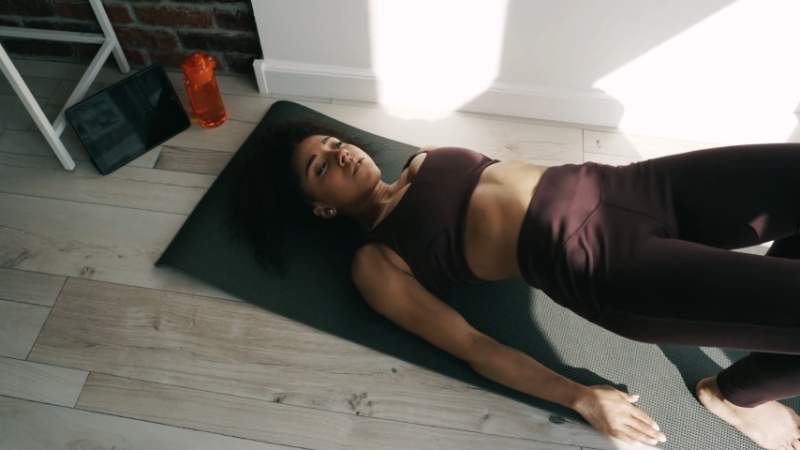
If you feel achy, tight, or just a little “meh,” this is the perfect time to give some love to the stuff you usually rush through: mobility, stretching, foam rolling, band reathwork.
Some people find that lower abdominal cramps ease up after gentle movement, especially when it targets the hips, glutes, and lower back.
Good bets:
- 10-minute mobility flows
- Seated or supported yoga poses (like child’s pose, reclined twists)
- Cat-cow, pelvic tilts, gentle hip openers
- Self-massage or foam rolling for quads, hamstrings, and lower back
3. Go for Low-Impact Strength Options
Instead of skipping leg day or upper body push/pulls, just swap in joint-friendly versions.
Examples:
- Replace jump squats with tempo squats
- Switch burpees for slow mountain climbers or incline planks
- Use machines (like the leg press or chest press) when free weights feel too unstable
4. Focus on Form and Mind-Muscle Connection
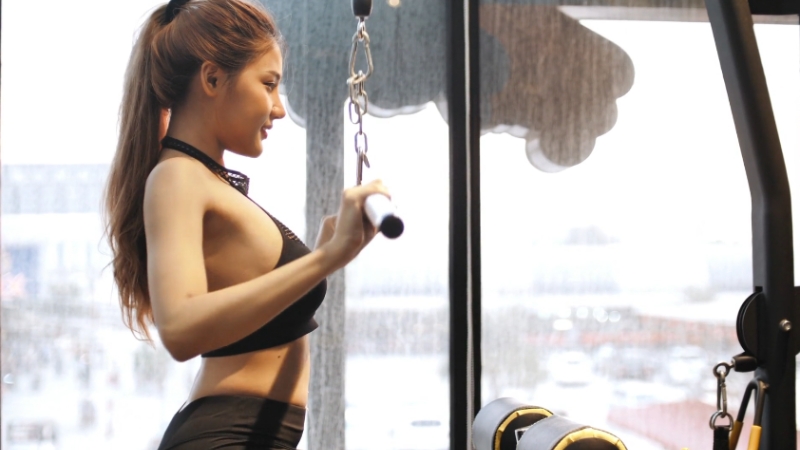
You know all those cues you sometimes blow past in a rush to hit PRs? This is your chance to slow down and really nail your technique.
What to try:
- Slower tempo lifts (e.g., 3–4 seconds lowering phase)
- Isolation moves with lighter weights (glute bridges, bicep curls, lateral raises)
- Mind-muscle connection drills (squeeze at the top, full range of motion)
How to Work With Your Energy (Not Against It)
Let’s say you feel okay energy-wise but still aren’t hitting your normal numbers.
That’s not failure — it’s your body reallocating resources to deal with, well, shedding a uterine lining.
So instead of trying to match your best workouts, focus on workouts that feel good, energizing, instead of draining.
Try a “PE” Check
Quick tip: Use a 1–10 scale of perceived exertion (PE). Aim to keep workouts between 5 and 7 during your period. You’re still challenging yourself, but not redlining.
PE scale examples:
- 5 = Light sweat, can talk easily, mild effort
- 6 = Breathing heavier, working but controlled
- 7 = Breathing gets harder, starting to push, still in good form
- 8–9+ = Save for later in your cycle
If you track your cycle, you might even notice patterns: more fatigue on day 1–2, more energy by day 4–5. Planning around that can save you a lot of frustration.
Period-Friendly Workout Ideas (Real Examples)
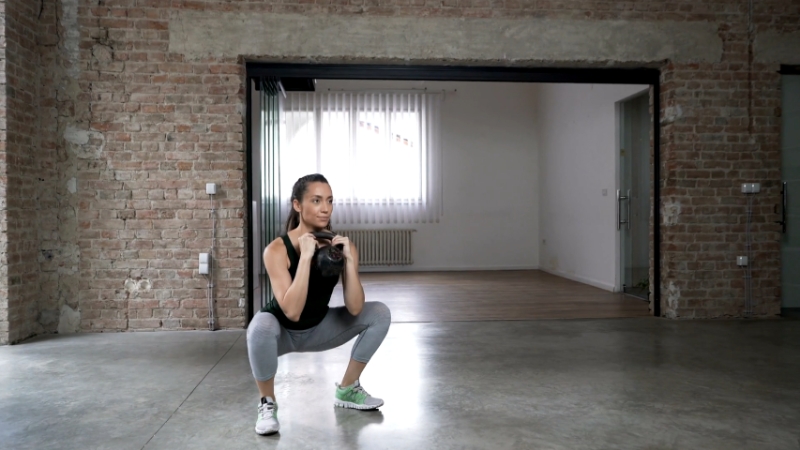
Gentle Full-Body Strength (30–40 minutes)
| Exercise | Sets x Reps / Time | Notes |
| Goblet Squats | 3 x 10 | Use moderate weight, control your tempo |
| Bent-Over Rows | 3 x 10 | Keep spine neutral, squeeze at the top |
| Glute Bridges | 3 x 12 | Optional: add a band or weight |
| Overhead Press | 3 x 10 | Seated or standing, slow on the way down |
| Farmer Carries | 3 x 30 seconds | Focus on posture and controlled breathing |
| Rest | 60–90 seconds between sets | Stay moving gently, sip water |
Low-Impact Conditioning Circuit (20–25 minutes)
Repeat 3–4 Rounds
| Exercise | Time / Reps | Notes |
| Marching or Step-Ups | 1 minute | Stay light on your feet, use a step or stairs |
| Wall Sit | 30–45 seconds | Press through heels, stay tall |
| Bodyweight Hip Thrusts | 15 reps | Pause briefly at the top |
| Bird-Dogs or Deadbugs | 10 reps per side | Move slow and controlled |
| Standing Band Rows | 12–15 reps | Keep elbows close, squeeze shoulder blades |
Core & Mobility Flow (25–30 minutes)
| Movement | Time / Reps | Notes |
| Cat-Cow | 1–2 minutes | Breathe deeply, move with control |
| Glute Bridges | 3 x 15 | Keep ribs down, push through heels |
| Deadbugs | 3 x 10 | Lower limbs slowly, engage your core |
| Seated Twist + Side Stretch | Hold 30 sec per side | Gentle torso rotation and side body opening |
| Standing Hamstring + Quad Stretch | Hold 30 sec per leg | Support yourself on a wall if needed |
What to Eat and Drink to Support Your Training
If you’re still hitting workouts (even modified ones), what you eat matters, maybe more than usual. Cravings aside, your body needs fuel to repair muscle and manage inflammation.
Period-Friendly Fueling Tips
- Prioritize iron-rich foods (red meat, lentils, spinach, pumpkin seeds) to offset blood loss
- Stay hydrated — you’re more likely to be low on fluids, especially if cramps or digestion issues hit
- Add magnesium (leafy greens, dark chocolate, almonds) to help with cramps and muscle recovery
- Don’t fast aggressively — skipping meals can make fatigue worse
Listen Without Judging Yourself
Let’s be real: some days your body will say, “Yes, let’s lift,” and other days it’ll scream, “Nope, not today.” And that’s okay.
Modifying your workouts during your period isn’t a cop-out; it’s smart training. It means you’re paying attention, building resilience, and staying consistent without burning out.
Remember: progress doesn’t come from doing the hardest thing every time. It comes from showing up again and again, even if how you show up looks a little different some days.
Related Posts:
- How to Balance Fitness, School, and Work Without…
- Does Losing Weight Make You Taller? Exploring the Connection
- Why Does Your Elbow Hurt During Workouts? Causes & Solutions
- Gym Etiquette Guide - Graceful Tips for Staying…
- How Working Moms Can Squeeze in Workouts During a Busy Day
- How to Recognize and Treat Dehydration During a Workout






